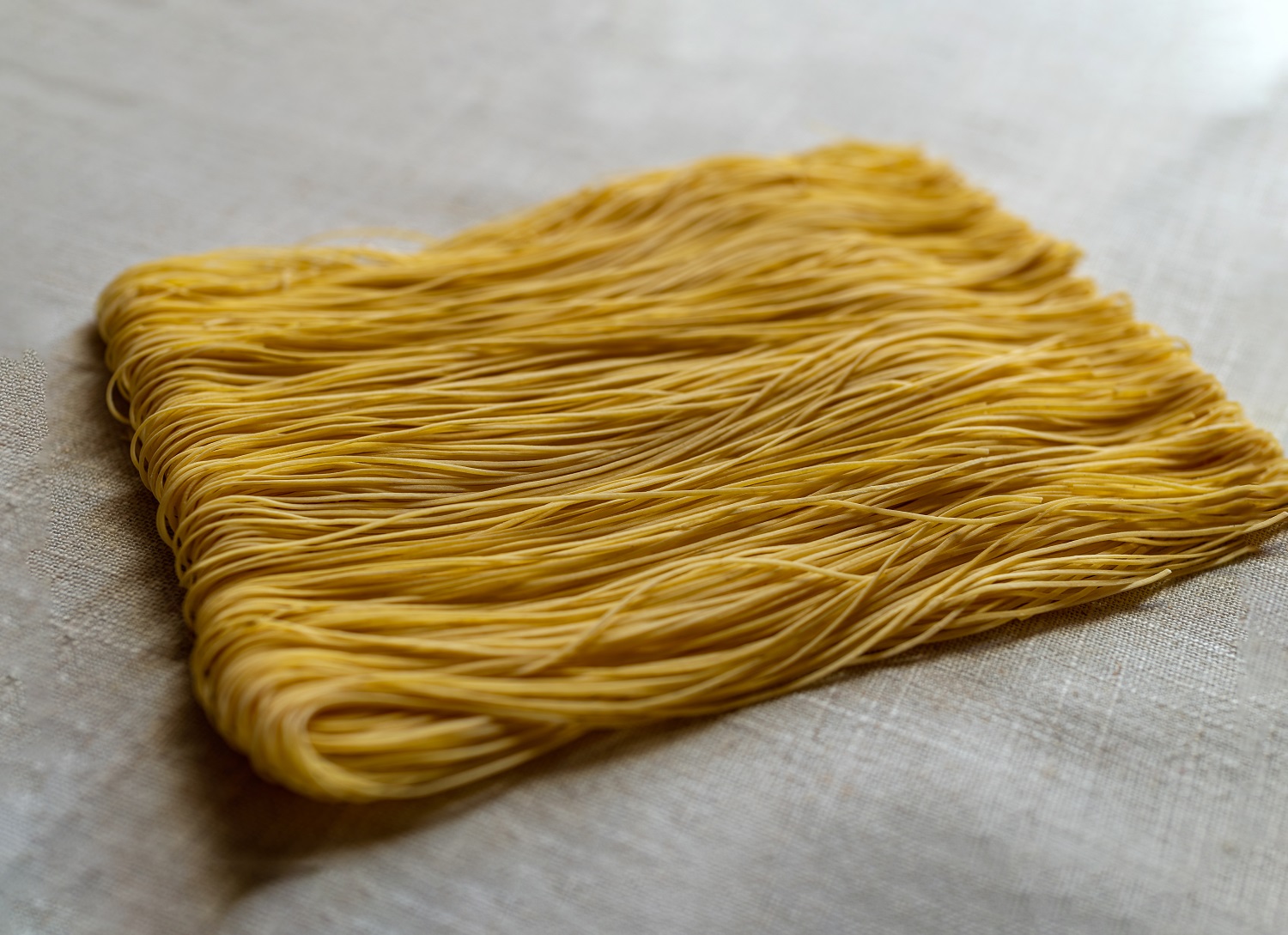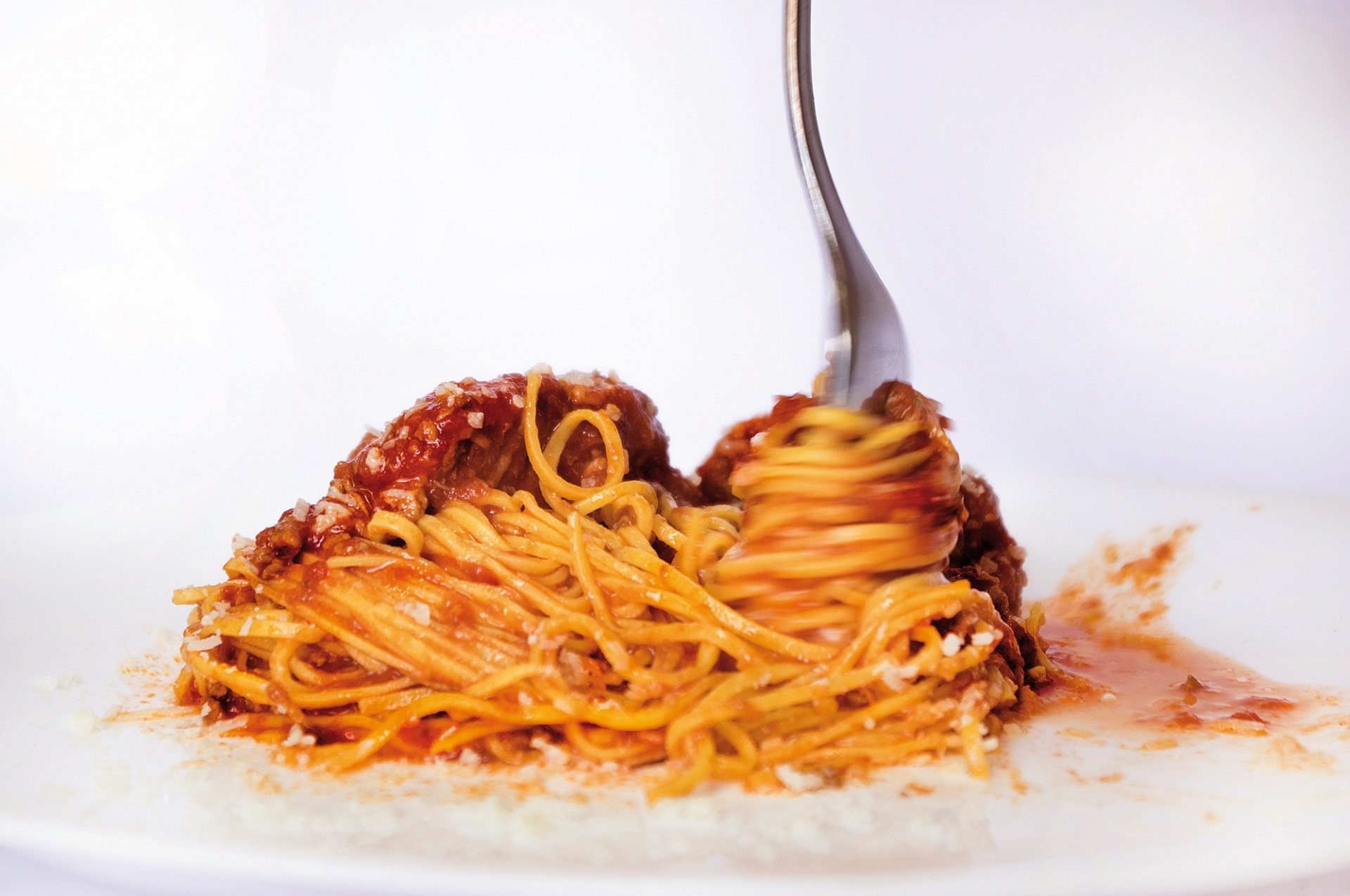Maccheroncini di Campofilone represent the most genuine expression of the culture of the land, of a popular tradition inherited and handed down from generation to generation, maintaining this original pasta recipe unaltered, the fruit of skilled hands. At one time this dish was reserved for the celebration of major holidays and was considered a precious gift to be offered to distinguished friends. The name of this pasta is linked, as it is mentioned in the specification, to Nello Spinosi who, with his resourcefulness, was the architect of the spread of Maccheroncini throughout the local towns and beyond.
Acknowledgements
Since 2013, “Maccheroncini di Campofilone” has obtained I.G.P. recognition.
The PGI (Protected Geographical Indication) mark represents an EU recognition assigned to agricultural, food, or wine products, guaranteeing their authenticity and local origin. In this context, Maccheroncini di Campofilone stands out as the only Italian egg pasta to be awarded this prestigious certificate. Today it represents one of Italy’s 147 PGIs in the food sector, with Italy ranking first in Europe for Geographical Indication food products.
An Original Pasta Recipe
The name of these fine strands of pasta, also known as “angel hats,” comes from the term “macaroni” by which all pasta was once referred to. The thin texture determined the choice of the diminutive.
Maccheroncini di Campofilone are made from a dough of fresh eggs (from free-range chickens fed exclusively on grain), and durum wheat semolina or double-zero wheat flour, with no water added. The use of raw materials containing GMOs is also not allowed.
The supply of eggs, linked to the biological cycle of the hens, led the resourceful women who first created this pasta to experiment with a drying process that would allow the pasta to be consumed at any time of the year. However, the coarseness of the cut had a drawback; during the drying process, air caused curvatures in the dough, causing it to break in several places. Therefore, cooks began to cut the “pannella” into extremely thin strands, which, resistant to the effects of air, remained intact until mealtime.
History
The tradition of Campofilone pasta began in rural kitchens and only in the 1960s in artisanal workshops, where this thin pasta soon became a representation of the skill of the women housewives, who prepared it especially on special occasions or for special guests.
Over time, the technique and work required for the preparation of this pasta have been handed down from generation to generation. As early as the 15th century it was considered to be a prized dish, even mentioned in the communication of the Abbey of Campofilone and the following century in some documents of the Council of Trent. Mentioned, too, in some notebooks of illustrious noble families, such as the Stelluti Scala and Conti Vinci, in which cooks transcribed favorite recipes for future recruits. In the annotations for the cook of the Leopardi household, the young Giacomo reports his culinary preferences and predilection for Campofilone pasta cooked in three variations.
However, it was at the beginning of the 1900s that Maccheroncini began to be seen on the menus of inns and trattorias in Campofilone, giving rise to an interesting trade, carried on by numerous family businesses, that made the Fermano town known worldwide. Their fame is mainly owed to Nello Spinosi who, in 1965, with his artisanal enterprise “Alimentari Valdaso” made the first package for sale, overcoming a consumption, until then purely homemade, and beginning the diffusion and commercialization of Campofilone pasta.
Production
The production area of Maccheroncini di Campofilone IGP includes only the territory of Campofilone, a small medieval village in the province of Fermo, among the hills of the Marche region overlooking the Adriatic Sea.
Maccheroncini di Campofilone IGP, which have a rough and porous appearance, range in length from 35 to 60 cm, with a maximum thickness of 0.7 mm.
They are distinguished by the quantity of eggs used, from a minimum of 7 to a maximum of 10, for every kilogram of durum wheat semolina or double-zero wheat flour, about twice as much as other types of pasta.
This proportion, together with the slow drying process, determines a very high yield of the product (with 250 g of common pasta, two generous servings are obtained, while with Maccheroncini di Campofilone as many as four), from which follows the high absorbing capacity of maccheroncini, which retain a greater amount of sauce than other types and can even be cooked directly in the sauce without boiling.
Campofilone: between history and tradition
The territory of Campofilone, nestled in the green hills of the Marche region, located on the right bank of the Aso River, just 3 KM from the sea, boasts a historic center enclosed by solid walls, which protect its integrity and former beauty. It is accessed via a short tree-lined avenue, made unique by majestic centuries-old pine trees. It was developed around an important and wealthy Benedictine Abbey, dedicated to St. Bartholomew the Apostle, built on the remains of a Roman villa and a pagan temple that testify to the presence in the area of earlier Picene peoples.
In characteristic places and the countryside, maccheroncini are still served as they used to be, with a rich sauce of giblets, sprinkled with cacio pecorino cheese, with a very light veil of black pepper or red chili pepper. In the original sauce, tradition calls for the addition of a mixture of veal, pork, and chicken, to which a beef bone may also be added for flavor.
The Festival of the Maccheroncini di Campofilone
An opportunity to visit the area and savor its specialties is the first ten days of August, when the aroma of maccheroncini al ragù wafts through the village streets, a four-day event that has celebrated the skill and craftsmanship of an industrious area since 1964.
Marinella Fagaraz, president of the Italian Academy of Mediterranean Diet
Photo credit: ©Alberto Blasetti


